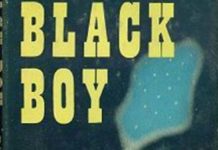Dee Brown takes the reader back to the beginning of the railroad when the Iron Horse was in direct competition with the canals, such as the Erie Canal.
In his book, Dee Brown details how the railroad ran across the Mississippi Valley to Rock Island Illinois and how Peter Dey and Grenville Dodge were already in Iowa surveying for the railroad. There were four men that pulled the railroad together. They all, at one time or another, had a hand in building canals, railways, and financing; all were from the east.
Dee Brown’s writing style is done with simplicity. It is easy to read and understand. He always gives background information so the reader would be aware of the past history of the event that took place and why it was taking place.
Abraham Lincoln Takes Part in Steamship Case
The writer’s words and descriptions of people, places and events that were taking place is seen throughout the pages with the characters and events. It is also interesting to learn the role Abraham Lincoln played in the Rock Island Case in 1857. Brown explained how the river men were against the building of a bridge across the Mississippi River. The men believed that the railroad would hurt their steamship business.
On May 6, 1856, a steamship crashed into the Rock Island Bridge and caught fire and was destroyed. The steamship owner filed a lawsuit against the railroad men. The men, Farnam and associates wanted a first rate lawyer, for them that was Abraham Lincoln. Lincoln personally looked at the damage of the bridge and the steamship. He researched all aspects of the accident and then asked what harm is there in building bridges over waterways? The railroad men won the case.
Brown’s words traveled across Iowa as the transcontinental railroad made its way to the Missouri River. On the border of Iowa and Nebraska, the next big decision had to be made. Where is the best place to cross the Missouri River?
In 1859, Lincoln met Dodge in Council Bluffs. Dodge had recently completed the survey of the Platte River. The Union Pacific began at Omaha, Nebraska, while the Central Pacific began in Sacramento, California.
Brown’s description of the cars and how the rails were laid is informative. The reader learns that traveling across the plains was not as easy as the movies and western novels portray it to be. The rail travelers actually got dirty and dusty from the stove stack smoke. In fact, travelers would change into old clothes, before riding the train across country. The rides were also rough and bumpy.
Railroad Towns Became Hell on Wheels
The author also described “Hell on Wheels” towns, which brought in all kinds of shady characters from prostitutes, to gamblers, to swindlers, and so on. Once the railroads were built, the people would leave too. Brown states, “the locomotive is a great centralizer, it kills towns and builds up great cities, and in some ways kills the little businesses and builds great ones”.
The reader can learn a lot about the American railroad from this book. It covered a lot of details that some books on the same subject omit. Through the vivid words of the author, the reader will feel as if they are right there with the laborers smelling the sweat and feeling the hot sun beating down on their back and then in the winter it is the feel of cold wind blowing in the face causing windburn.
Source:
- Brown, D. Hear That Lonesome Whistle Blow: Railroads in the West. NY, Touchstone. 1977.







